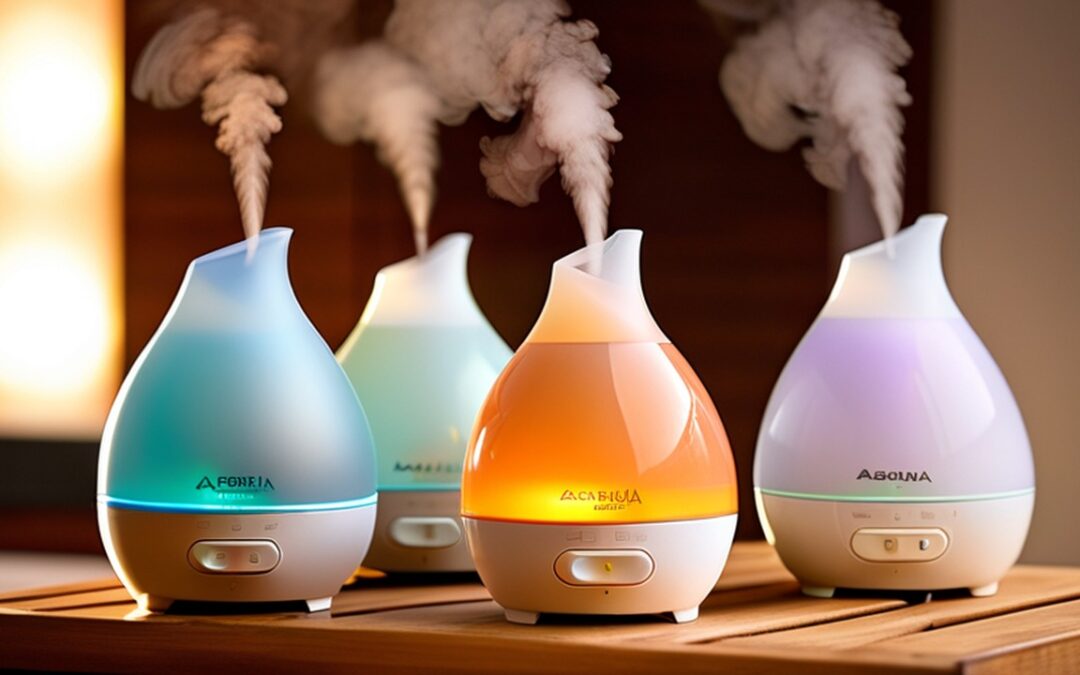Are you struggling with unexplained fatigue, mood swings, stubborn weight gain, or other frustrating symptoms?
Your energy levels, mood, and general well-being can all suffer from a hormonal imbalance—a surprisingly frequent problem.
While conventional treatments exist, many are seeking natural ways to regulate hormones.
Learning how to balance hormones naturally is possible, and incorporating effective herbs for hormone balance, alongside lifestyle changes, can offer a gentle yet powerful path to feeling your best.
For ages, people have used herbs to help balance hormones. They help restore balance when you use them right, and if you take a whole-person approach.
Many people are turning to hormone balancing tea and other natural remedies for hormonal imbalance in females.
Hormonal imbalances occur when there’s an excess or deficiency of one or more hormones, disrupting the delicate communication network that regulates countless bodily functions.
Stress, diet, lifestyle choices, your genes, and even health problems like PCOS (Polycystic Ovary Síndrome) or thyroid issues can all play a part.
Common signs of hormonal imbalance:
- Persistent fatigue
- Unexplained weight gain or loss
- Mood swings, anxiety, or depression
- Sleep disturbances
- Irregular menstrual cycles
- Infertility
- Acne or skin problems
- Hair loss
- Digestive issues
Introducing a Holistic Approach
Balancing hormones naturally requires a holistic approach that combines dietary changes, exercise, stress management, and, in some cases, targeted herbal support.
Want to balance your hormones? Some incredible herbs are covered in this guide; they can be a real help. But remember, it’s a process—a whole-body approach will get you the best results.
Top Natural Herbs for Hormonal Balance (Backed by Science)
(Disclaimer: Always consult with a qualified healthcare professional before using herbs, especially if you have underlying health conditions or are taking medications. Herbs can interact with medications and may not be suitable for everyone.)
- Vitex (Chasteberry) – For PMS (Premenstrual syndrome ) and Menstrual Irregularities
Specific Benefit
Vitex, also known as chasteberry, is a Mediterranean shrub traditionally used to manage hormonal imbalances, particularly those related to PMS (Premenstrual síndrome) and menstrual irregularities, including PCOS (Polycystic Ovary Síndrome).
How it Works
The pituitary gland, which controls prolactin, FSH (Follicle-stimulating hormone), and LH (Luteinizing hormone), is thought to be affected by Vitex.
Think tender breasts, bloating, or not a straight cycle? Want more balanced hormones? Vitex could help.
This herb may reduce prolactin and even out your estrogen and progesterone. This often leads to relief from those pesky PMS Premenstrual síndrome) symptoms.
Dosage and Usage
Typically taken in capsule or liquid extract form. A common dosage is 20-40mg of a standardized extract per day.
It’s best to take Vitex in the morning on an empty stomach. Consistency is key; it may take several months to see noticeable results.
Cautions
Vitex is generally considered safe, but some individuals may experience mild side effects like nausea, headache, or digestive upset.
It is not recommended for pregnant or breastfeeding women or those taking hormonal medications.
- Maca Root – For Energy, Mood, and Fertility
Specific Benefit
Peruvian maca root—an adaptogen—may help improve energy levels, lift your spirits, and increase fertility for both genders. It’s often included in hormone balance tea blends.
How it Works
Unlike Vitex, Maca does not contain phytohormones (plant-based hormones). Your hormones get a boost. The endocrine system’s natural functions are supported.
This helps balance hormones. Think of it like giving your body’s hormone factory a tune-up.
Think of maca as a hormone-supporting superstar! It’s brimming with essential amino acids, vitamins, and minerals that your body needs to function properly.
Dosage and Usage
Maca is available in powder, capsule, and extract forms. A typical starting dose is 1-3 grams per day, which can be gradually increased as needed. Toss it in a smoothie, blend it into yogurt, or add it to your meals.
Cautions
Maca is generally considered safe, but some individuals may experience mild side effects like digestive upset or insomnia. It is not recommended for individuals with thyroid conditions without consulting a healthcare professional.
- Ashwagandha – For Stress and Hormone Balance
Specific Benefit
Ashwagandha, an adaptogenic herb from Ayurvedic medicine, is prized for its ability to reduce stress, balance cortisol levels, and improve reproductive health.
This herb is among the best for women’s hormonal well-being; it’s a natural solution many find effective.
How it Works
Ashwagandha helps the body adapt to stress by modulating the hypothalamic-pituitary-adrenal (HPA) axis, which regulates the stress response.
Chronic stress affects hormone balance in several ways: insulin resistance, thyroid issues, and fertility problems are all possibilities.
Ashwagandha might help people dealing with high cortisol levels. For example, someone with high stress levels could experience problems with their menstrual cycle.
Ashwagandha may help reduce the negative effects. There’s a chance this will help support the health of your adrenal glands.
Dosage and Usage
Ashwagandha is available in capsule, powder, and liquid extract forms. A typical dose is 300-500mg of a standardized extract per day. It’s best to take Ashwagandha with food to improve absorption.
Cautions
Ashwagandha is generally considered safe, but some individuals may experience mild side effects like digestive upset or drowsiness.
It is not recommended for pregnant or breastfeeding women or those with autoimmune conditions without consulting a healthcare professional.
- Rhodiola – For Energy, Mood, and Stress Resilience
Specific Benefit
Stress got you down? Rhodiola, a remarkable adaptogen, might be your answer. Increased energy, a happier outlook, and better stress management—this herb offers it all. Herbalists often include this in blends designed to regulate hormones; it works well with other supportive herbs.
How it Works
Stress got you down? Rhodiola may help. This raises levels of serotonin and dopamine; these brain chemicals are what control your mood, energy, and how well you concentrate.
Antioxidants in this protect cells. They act as a shield against the harm caused by stress hormones.
Dosage and Usage
Rhodiola is available in capsule and liquid extract forms. A typical dose is 100-400mg per day, taken in the morning.
Cautions
Rhodiola is generally considered safe, but some individuals may experience mild side effects like insomnia or anxiety.
It is not recommended for individuals with bipolar disorder or those taking stimulant medications without consulting a healthcare professional.
Additional Herbs for Hormone Balance
- Black Cohosh: Often used for menopausal symptoms like hot flashes and night sweats.
- Spearmint: May help reduce excess testosterone in women with PCOS.
- Evening Primrose Oil: Supports overall hormone balance and may alleviate PMS symptoms.
- Shatavari: An Ayurvedic herb that supports female reproductive health.
- Wild Yam: Contains compounds that may support progesterone levels.
- Red Raspberry Leaf: Often used to support uterine health and regulate menstrual cycles.
Additional Lifestyle Tips for Hormonal Health (A Foundation for Balance)
While herbs can be helpful, they are most effective when combined with a healthy lifestyle. These natural ways to balance hormones can complement the use of herbs:
Diet Recommendations (Nourishing Your Hormones)
- Prioritize Whole Foods: Focus on fruits, vegetables, lean proteins, and healthy fats.
- Include Cruciferous Vegetables: Broccoli, cauliflower, and kale support hormone metabolism and liver detoxification.
- Get Enough Protein: Aim for 15-30 grams of protein per meal to stabilize blood sugar and hormone levels.
- Consume Healthy Fats: Olive oil, avocados, nuts, and seeds provide essential building blocks for hormone production.
- Limit Processed Foods, Sugar, and Alcohol: These can disrupt hormone balance and contribute to weight gain.
Exercise and Stress Management (Moving Your Body, Calming Your Mind)
- Engage in Regular Physical Activity: Aim for a mix of cardio and strength training to prevent insulin resistance and improve hormone receptor sensitivity.
- Practice Stress-Reducing Techniques: Meditation, yoga, deep breathing, and spending time in nature can help lower cortisol levels.
Adequate Sleep (Restoring Your Body’s Rhythm)
- Aim for 7-8 Hours of Quality Sleep: If you aren’t sleeping enough, your body’s hormones get all out of balance. You’ll feel hungrier, and that can easily cause weight gain.
Gut Health (The Unsung Hero of Hormone Balance)
- Consume Probiotic-Rich Foods: Yogurt, kefir, sauerkraut, and kimchi support a healthy gut microbiome, which plays a crucial role in hormone regulation.
- Eat Prebiotic-Rich Foods: Onions, garlic, asparagus, and bananas feed beneficial gut bacteria.
- Consider a Probiotic Supplement: If you’re not getting enough probiotics from your diet, a supplement can be helpful. Consult your Doctor.
How to Use Herbs Safely and Effectively (Prioritizing Your Well-being)
It is essential to use herbs responsibly and under the guidance of a qualified healthcare professional.
Dosage Recommendations (Finding the Right Amount)
- Always adhere to recommended dosages.
- Start with a low dose and gradually increase as needed.
- Monitor for any side effects.
Potential Side Effects (Being Aware of Risks)
- Be aware that some herbs can cause adverse reactions, especially when taken in large quantities or by individuals with specific health conditions.
- Monitor for any unusual symptoms and report them to a healthcare provider.
Herb-Drug Interactions (Avoiding Dangerous Combinations)
- Herbs can interact with certain medications.
- If you’re taking any medications, consult with your healthcare provider before using herbs.
Consulting with a Healthcare Professional (Your Partner in Health)
- Using herbs to adjust hormone levels should always be supervised by a healthcare professional.
- Combining herbs and other treatments is easier with professional guidance. The best results are easily achieved with this method.
Myth Busting (Separating Fact from Fiction)
Addressing Common Misconceptions
- Myth: Herbs are always safe because they’re natural.
- Fact: Herbs can have potent effects and can interact with medications.
- Myth: You can balance your hormones overnight with herbs.
- Fact: It takes time and consistency to see results.
- Myth: Herbs are a replacement for medical treatment.
- Fact: Herbs should be used as a complement to medical treatment, not a replacement.
Conclusion: Embracing a Balanced Approach to Hormonal Health
Finding your hormonal balance naturally takes time, a whole-body approach, and kindness to yourself.
Herbs are helpful, but they work best alongside a healthy lifestyle and with a doctor’s advice.
Taking charge of your hormones can be easy! Try balancing hormones naturally with herbal teas and other remedies. Increased energy and better health are on the horizon. Prepare to feel amazing.
Whether you’re dealing with PCOS (Polycystic Ovary Síndrome), perimenopause, or other hormonal challenges, remember that there are natural ways to regulate hormones and support your body’s balance.
(Disclaimer: The information provided in this article is for educational purposes only and is not intended to be a substitute for professional medical advice. Always consult with a qualified healthcare professional before using herbs or making any changes to your healthcare plan.)
















